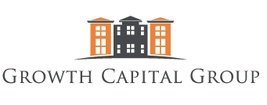Regarding real estate investments, multifamily properties have proven lucrative for generating consistent cash flow. With the right multifamily investment strategy, investors can enjoy stable income streams while building long-term wealth. This blog will explore effective multifamily investment strategies that can help you maximize cash flow generation and achieve your financial goals.
Multifamily Investment Strategy for Maximize Cash Flow
- Selecting High-Demand Locations:
The correct location is crucial for cash flow generation in multifamily investments. Look for areas with strong rental demand, low vacancy rates, and promising economic growth. Urban centers, college towns, and areas with access to amenities and public transportation are often favorable options.
Analyzing Market Rental Rates: Conduct thorough market research to understand rental rates in your target area. Compare the potential rental income of multifamily properties with the local market rates. Investing in properties that generate rents above the mortgage and operating expenses is essential, ensuring positive cash flow.
- Cash Flow Analysis:
- Perform a comprehensive cash flow analysis before investing.
- Consider rental income, operating expenses (including property management fees, maintenance costs, insurance, and utilities), financing costs, and potential vacancies.
- Utilize tools like spreadsheets or real estate investment software to estimate your possible cash flow and determine if the investment aligns with your financial objectives.
- Value-Add Strategies:
Implementing value-add strategies can significantly enhance cash flow in multifamily investments. Look for properties with the potential for improvements or renovations that can increase rental rates or attract higher-quality tenants. Consider cosmetic upgrades, energy-efficient improvements, or adding amenities such as a fitness center or community space. These enhancements can justify higher rents and create additional revenue streams.
- Effective Property Management:
Partner with a reputable property management company or build a reliable in-house team. Effective property management ensures proper tenant screening, timely rent collection, efficient maintenance and repairs, and proactive vacancy management. A well-managed property minimizes vacancies, reduces turnover costs, and maintains a positive cash flow.
- Rental Market Optimization:
Regularly review and adjust rental rates based on market trends and demand. Conduct a competitive analysis to determine if your rents are competitive within the local market. Consider offering incentives such as discounts on longer leases or amenities to attract and retain quality tenants. Additionally, consider exploring short-term rental options like Airbnb for specific units to maximize income potential in high-demand areas.
- Expense Management:
Efficient expense management is crucial for maintaining cash flow. Regularly review and optimize your operating expenses. Seek cost-effective service providers for maintenance, repairs, and utilities. Consider implementing energy-saving initiatives to reduce utility expenses. Review insurance policies to ensure you have adequate coverage at the best rates. Proactive expense management can increase profitability and cash flow.
- Financing and Loan Options:
- Explore different financing options to optimize cash flow generation.
- Compare loan terms and interest rates from other lenders.
- Consider long-term fixed-rate loans to lock in favorable rates and stabilize expenses.
- Evaluate the benefits of government-backed loan programs specifically designed for multifamily properties, such as FHA or Fannie Mae loans, which often offer favorable terms.
How to calculate cash flow with a multifamily investment Strategy?
Calculating cash flow on a multifamily property involves analyzing the income and expenses associated with the investment. Here’s a step-by-step guide on how to calculate cash flow:
- Determine Gross Potential Income (GPI):
Start by determining the potential rental income for all units in the multifamily property. Multiply the total number of units by the market rent for each team. This calculation provides the gross potential income.
- Account for Vacancy and Collection Losses:
Consider the potential vacancy and collection losses when estimating rental income. Deduct a percentage (typically 5-10%) from the GPI to account for periods when units may be vacant, or tenants may not pay on time.
- Calculate Effective Gross Income (EGI):
Subtract the GPI’s estimated vacancy and collection losses to obtain adequate gross income. The EGI represents the actual income the property is expected to generate.
- Determine Operating Expenses:
Identify all the expenses of operating the multifamily property. These expenses include property taxes, insurance, utilities, maintenance, repairs, property management fees, and other recurring costs. It’s essential to consider both fixed and variable expenses.
Conclusion:
A well-executed multifamily investment strategy can provide consistent cash flow and help you achieve your financial objectives. You can maximize cash flow generation and build long-term wealth by conducting thorough market analysis, implementing value-add strategies, optimizing rental rates, managing expenses efficiently, and utilizing suitable financing options. Remember to stay proactive, monitor market trends, and adapt your plan to ensure continued success in your multifamily investments.
Unlock the potential of multifamily properties for passive income and financial freedom. For more details Get in touch with us.

